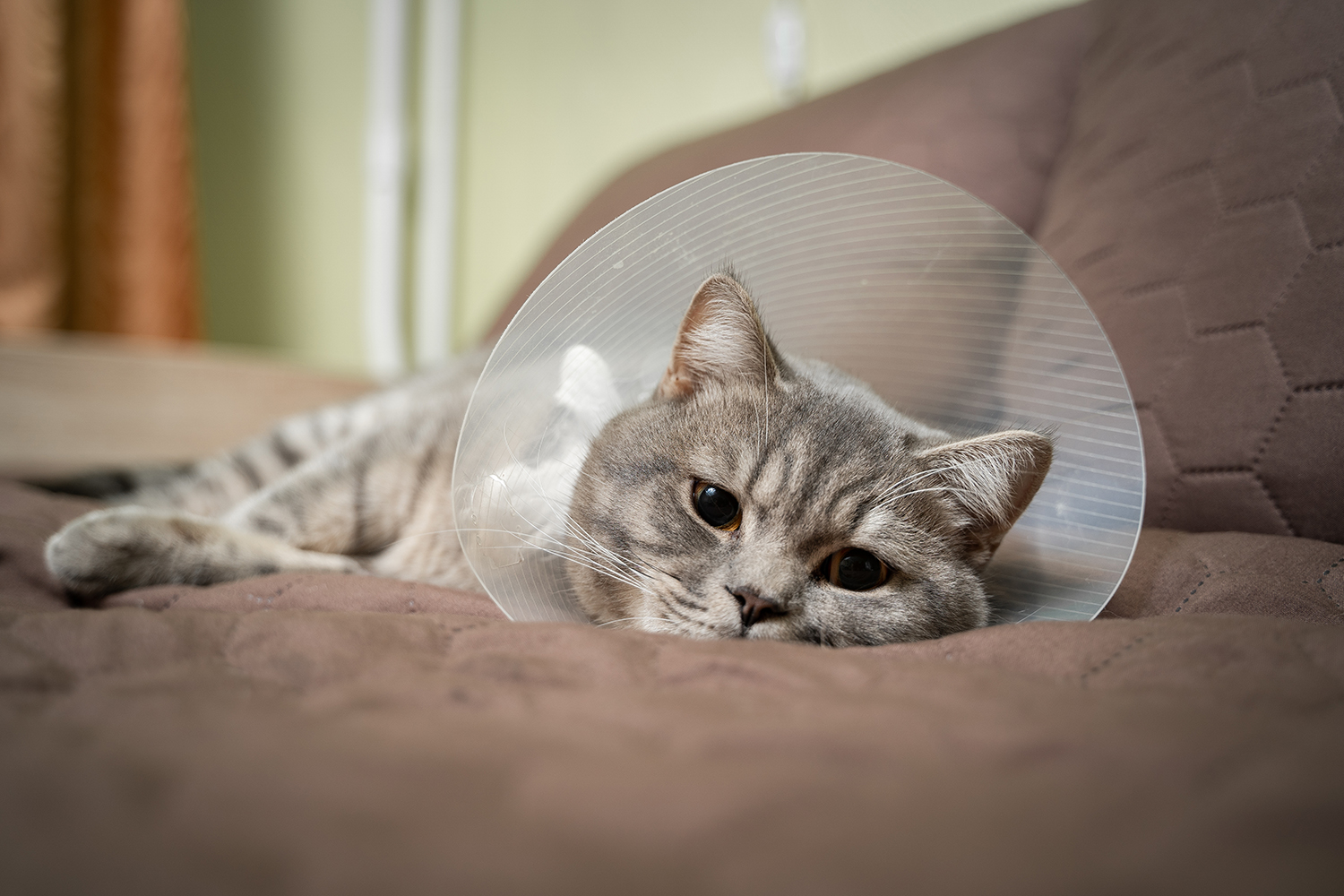If your cat gets into difficulty, is severely ill or is injured, would you know what to do? Our Top Tips will help you to give them the very best chance!
1) Call us at the vets!
24 hours a day, 7 days a week, we’ll have a vet on duty. Even if you just need advice, call us, and they can talk you through the first aid needed. In addition, if you’re coming in with a cat casualty, it’ll give them time to get to the surgery and make sure everything’s set up.
2) Don’t get injured yourself
If you become a casualty, you’re not helping your pet! Make sure that you’re safe – for example…
- don’t run out into the road to help a cat who’s been hit by a car until you know it’s safe;
- don’t jump into deep water to save a cat who seems to be drowning (apart from anything else, cats actually swim pretty well!);
- always turn off electricity if electrocution is a possibility.
- finally, remember that a scared or hurting cat may well bite and scratch, so make sure you have a towel or gauntlets, just in case.
3) Assess their injuries
Is this something you need to deal with yourself before they can be moved? Or is it better to “grab and go”? Things you need to deal with before moving the patient include cardiorespiratory arrest (see ABC, below), severe bleeding, and bad burns. Most other conditions just need to get into us ASAP – but we will need to know what the problem is!
4) A is for Airway
If the cat isn’t breathing (check by holding a wisp of hair in front of the nostril, and see if it moves), they may have an airway obstruction, so gently extend their head and neck forwards. Ideally, pull their tongue out, but make sure you don’t get bitten if they suddenly wake up! Using a pair of tweezers or similar might help.
5) B is for Breathing
If the airway is clear, but they’re unconscious and still aren’t breathing, you may need to give artificial respiration… but first, check their heartbeat (circulation, below)! If their heart is beating but they aren’t breathing, then they need to see us ASAP. On the way, you’ll need to do mouth-to-nose breathing for them:
- Hold the mouth shut (to get a seal).
- Blog gently into their nostrils until the chest rises.
- Let the breath out and then repeat.
- You should aim for about 20 breaths a minute.
6) C is for Circulation
Always check for a heartbeat – feel on the left side of the cat’s chest, just under the elbow. If you can’t feel anything, they’re unconscious and not breathing, assume their heart has stopped. You need to get them to us ASAP, and do CPR on the way to keep them going until our vets can start working.
- Lay them on their right hand side, if possible.
- Hold the chest in your hand, with your thumb on top just behind the elbow.
- Squeeze 100 times a minute (just like humans – think “Staying Alive”!), compressing the chest to ⅓ of its normal width each time.
- This will pump blood around the body, but also allow some air into the chest so you don’t need to do rescue breaths as well.
7) Stop the bleeding
If there is severe bleeding, especially from an artery (bright red blood, spurting), the cat may die of blood loss in a matter of minutes. The best thing to do is to apply pressure to the wound with your hand, ideally through a pad of clean cloth or gauze. Then get them to us to fix the damage!
8) Keep fitting animals quiet
Animals that are having fits cannot “swallow their tongues” so don’t worry about that. Instead, try to keep them in a dim, calm, quiet area without touching or doing anything else to stimulate them. Most fits will end on their own in a few minutes. However, if a fit lasts longer than 4 minutes, or the cat has 2 without recovering, just get them to us right away – this may be status epilepticus which is potentially fatal without treatment.
9) Cool any burns
Burns should be cooled with running water if possible, but do not put any creams or ointments on them. If the cat is in severe pain, wrap the burned areas in clingfilm. Remember, never give human medicines to a cat, as they are often dangerous.
10) Get them to us as quickly and safely as you can!
Remember to restrain them adequately on the way – ideally in a box or carrier, unless you’re actively doing CPR or applying pressure, because even very sick cats can disappear incredibly rapidly if given the chance…
If you can do basic first aid to keep them alive until they get to us, they have the best of chances. So remember CAT – Call, Act, Transport, and leave the rest to us!





